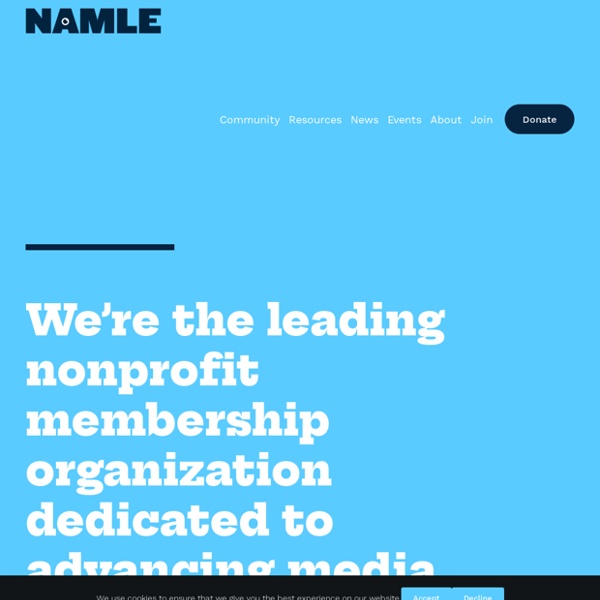Zoom
Trash



Misinfo Monday: Are Algorithms Feeding You Crap? (Look for others in this weekly Mozilla blog) Have you ever had a discussion with a family member or an old friend, and felt like they were living on a completely different planet? You know their world view is very different from yours but still, every fact or anecdote they give you seems...strange. Where did they hear all this crap? On wrapping it up with a meme: reflecting on the semester Each semester I ask my Search and the Information Landscape sections to reflect on their learning by thinking about it figuratively and metaphorically, visualizing the landscape and their place in it. This year, I added the option of a meme to the visualization menu. I wonder what would happen if you asked your students to wrap up their year in the library, their year of learning, or their year in a particular class with a visualization of some sort. Why visualize learning? If you are a constructionist, you believe learning is an active process.
High School – U.S. Media Literacy Week Pop-Up Newsroom Description: Anyone with a smartphone and access to social media can participate. All you need to do is cover your media literacy events and activities by tweeting, posting, and commenting about what you’re doing on Twitter, Facebook, and Instagram. Encourage participants to collect media literacy stories to facilitate a dialogue on their social media platforms with other students, teachers, community and youth groups, and media professionals. Assign different roles and responsibilities – Twitter, Facebook or Instagram Monitor – to ensure you get the most out of your posts. All posts created on social media across different platforms must share the common hashtags: #MediaLitWk and #BeMediaLit [read more]
Students' Civic Online Reasoning Executive Summary The next presidential election is in our sights. Many high school students will be eligible to vote in 2020. Developing students' digital literacy The issue Even today’s students need support with some areas of digital practice, particularly in an academic context, so it’s important to make sure that these needs are met. While employability is an obvious driver, developing learners who can learn and thrive in a digital society is a key role for universities and colleges. Global Media and Information Literacy Week Skip to main content Social Media Global Media and Information Literacy Week 23October Global Media and Information Literacy Week, commemorated annually, is a major occasion for stakeholders to review and celebrate the progress achieved towards “Media and Information Literacy for All”.
Online Civic Reasoning (edWeb webinar) Presented by Michelle Luhtala, Library Department Chair, New Canaan High School, CT; Jennifer LaGarde, Author and Consultant; and Kristine Goldhawk, Social Studies Teacher, New Canaan High School, CT Sponsored by Mackin Educational Resources Get a CE Certificate for this edWebinar Learn more “Nothing you can say will convince me otherwise.” This is a section heading in the first chapter of Facts Vs. Fiction: Teaching Critical Thinking Skills in the Age of Fake News, by Jennifer LaGarde and Darren Hudgins. What are the 21st-century skills every student needs? The gap between the skills people learn and the skills people need is becoming more obvious, as traditional learning falls short of equipping students with the knowledge they need to thrive, according to the World Economic Forum report New Vision for Education: Fostering Social and Emotional Learning Through Technology. Today's job candidates must be able to collaborate, communicate and solve problems – skills developed mainly through social and emotional learning (SEL). Combined with traditional skills, this social and emotional proficiency will equip students to succeed in the evolving digital economy.
The Fake News Problem - Fake News and Media Literacy - Research Guides at Santa Fe Community College While not a new phenomenon, the proliferation of fake news has gained dangerous traction in recent years, particularly in the arena of social media platforms such as Twitter and Facebook. This has created a vast, new set of daunting challenges, both for the news consumer and those whose passion it is to educate the future news consumer. This guide is intended for both students and faculty to use as a multi-dimension learning aid - or Swiss army knife, if you will :-) - in their exploration of critical thinking as it relates to media literacy - an aspect of our information-rich society that, arguably, is an essential part of navigating today's media landscape, which has recently been described as an "infodemic." Click here for an exploration of the word "infodemic." NEW!
*Enough with the CRAAP: We're just not doing it right - NeverEndingSearch It’s not the web it used to be and our traditional approaches to teaching about it no longer make sense. In fact, we teach strategies that often fail our students. A new study from the Stanford History Education Group (SHEG): Educating for Misunderstanding: How Approaches to Teaching Digital Literacy Make Students Susceptible to Scammers, Rogues, Bad Actors, and Hate Mongers, reveals some of the issues. Researchers studied 263 college students at a large East Coast state university and presented them with two tasks.